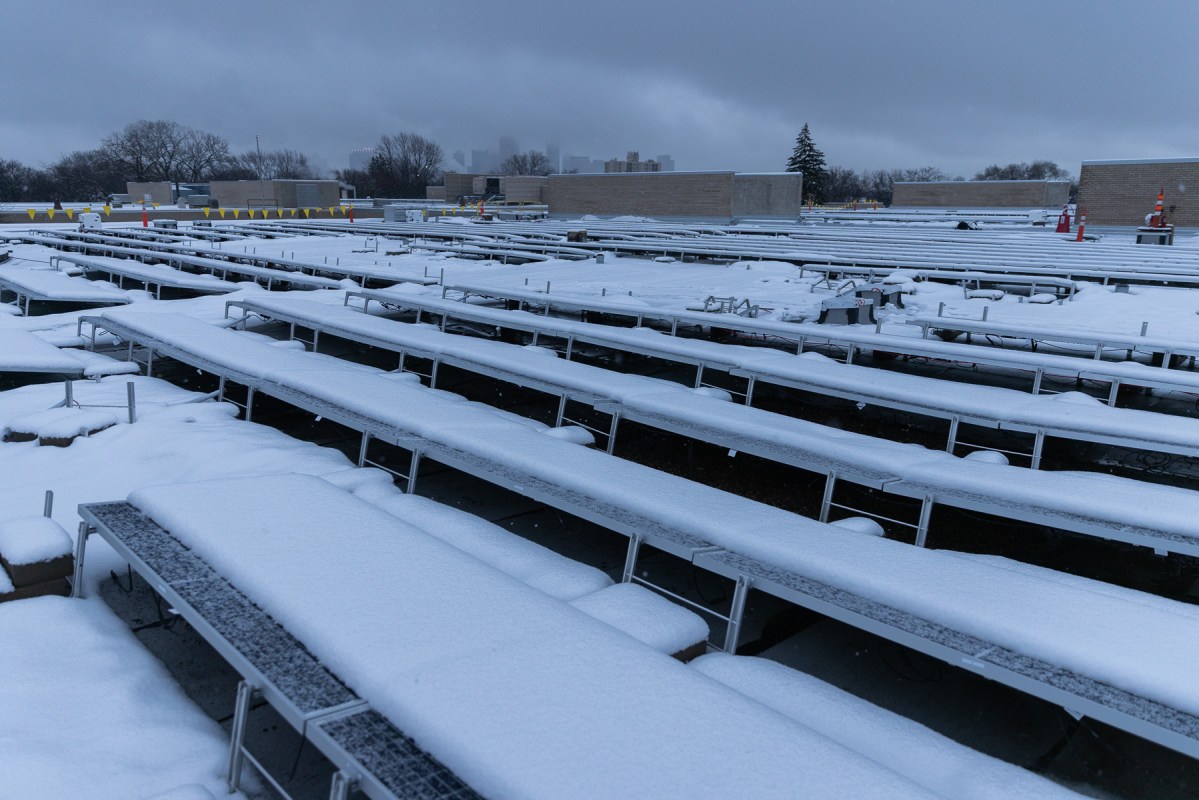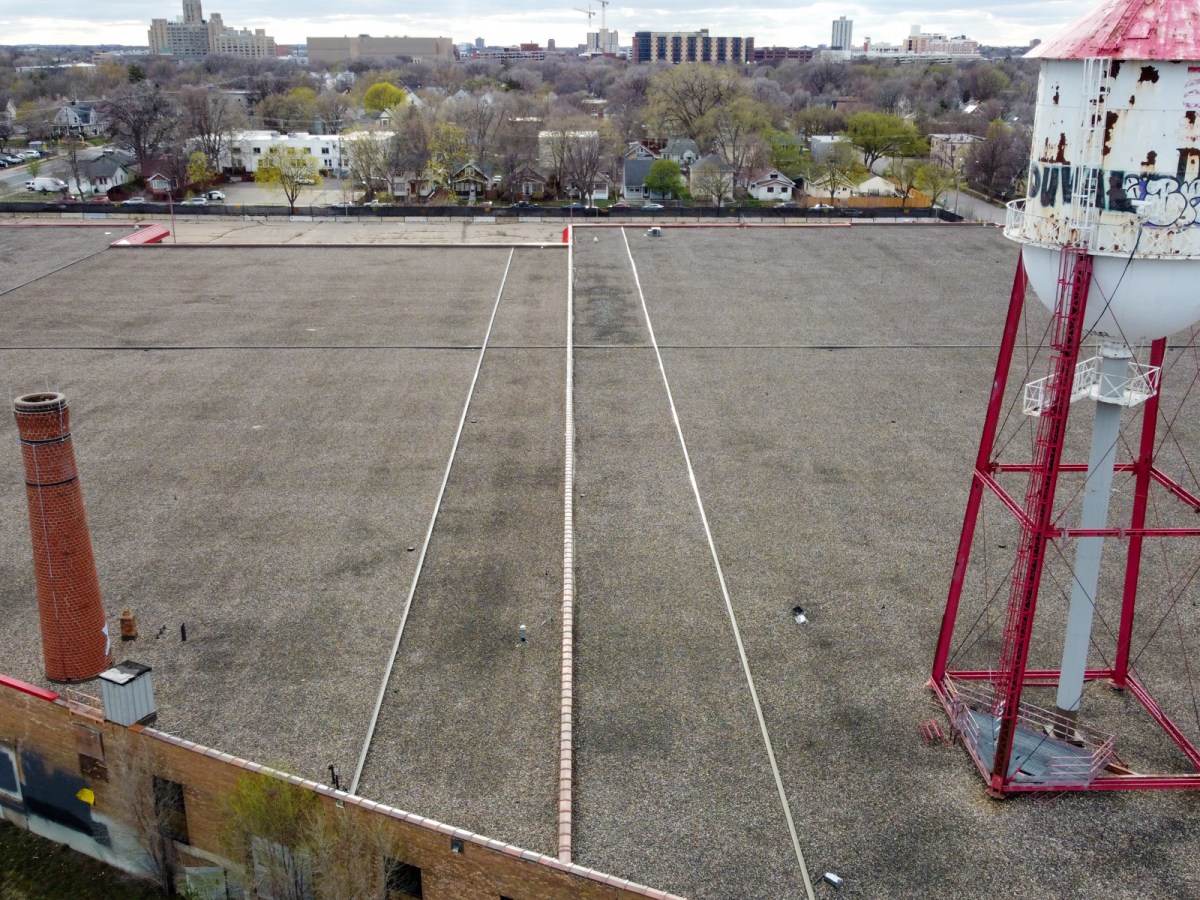Minnesota regulators on Thursday lowered the compensation rate for community solar gardens in a move designed to save money for Xcel Energy ratepayers that drew opposition from the solar industry and energy justice advocates.
The Minnesota Public Utilities Commission (PUC), a governor-appointed board that regulates the state’s energy providers, voted unanimously to change the way Minnesota’s original group of community solar gardens are reimbursed for the power they generate for Xcel Energy.
The rate change, a modified version of what was proposed by Xcel in September, will reduce reimbursements for most community solar garden subscribers in the state’s legacy program by around 30%. The decision will lower compensation rates for 742 of Minnesota’s 883 community solar gardens and alter rates set out in 25-year contracts between the developers and subscribers.
Xcel Energy argued that compensation rates for community solar were too expensive, and said the program’s costs would require the utility to charge an extra $7 per month on every Minnesota customer’s bill in 2024, creating a system where nonsubscribers were paying for the program.
Commissioners agreed that those extra costs were unfair for Xcel customers, and said that too many of the benefits were going to companies that subscribe to community arrays like Kwik Trip and to cities. Although residential customers are the majority of subscribers, around 80% of community solar power flows to businesses, cities, and school districts.
The PUC says the change will save Xcel customers in Minnesota roughly $40 million each year for the lifetime of the community solar contracts.
“We need to look out for all of Xcel’s energy-burdened customers,” PUC Chair Katie Sieben said.
But several groups that advocate for energy-burdened households and the solar industry in Minnesota argued against the change. Groups like the Just Solar Coalition, Community Power, and Minnesota Solar Energy Industries Association, say the decision will discourage people from embracing local solar power and worry that the PUC is siding with utilities it regulates.
“It’s really disappointing,” said Pouya Najmaie, policy director for Cooperative Energy Futures, a member-owned solar firm that works to connect low-income households and communities of color to community solar gardens.
RELATED STORIES
Changing the rates of signed contracts could discourage solar industry growth in Minnesota, and harm the perception of clean energy from current subscribers who will now have to pay higher rates. The Minnesota Department of Commerce argued that honoring those contracts was important to signal to developers that promises will be kept.
“It builds distrust,” said Kyle Samejima, executive director of Minneapolis Climate Action, which has developed community solar gardens.
Minnesota’s community solar garden program was established by lawmakers in 2013. It allowed solar companies to construct projects that fell between individual rooftop arrays and massive, utility-scale solar farms. The program is only open to customers of Xcel Energy, the state’s largest power provider, and was administered by the utility until changes were implemented in 2023.
The program sparked the solar industry in Minnesota in the 2010s and today represents 58% of the state’s solar capacity. Solar developers build arrays and sign up subscribers, who essentially lease panels in the array and receive bill credits on the energy those panels produce.
The vast majority of the projects pay customers based on a rate agreed to by Xcel Energy and regulators in 2014. But Xcel argued that the rate is outdated, and that today, the community gardens are credited with more than double the market rate of solar. That meant the utility was paying millions of dollars more than it needed to for power, and was distributing those costs to all customers.
The goal of the PUC’s change is to address the significant subsidy from nonsubscribing Xcel Energy customers to community solar users, said Vice Chair Joseph Sullivan, who authored the modification to Xcel’s proposal approved Thursday.
The change will place legacy gardens on the same compensation path of newer community solar projects that are compensated through a metric known as the value of solar. The commission approved a modified version of Xcel’s proposal, which included a better rate for residential community solar subscribers and a smaller boost through 2026 for larger entities such as companies and cities.
“It’s a major loss for our subscribers,” said Timothy DenHerder-Thomas, general manager of Cooperative Energy Futures.
Residents subscribed to legacy gardens receive a 17-cent-per-kilowatt-hour reimbursement. Starting next April, those subscribers will get around 15 cents per kilowatt hour, meaning their energy bills will rise. Companies and cities will see their reimbursement rate drop lower, to roughly 13 cents per kilowatt hour in 2025 and nearly 12 cents per kilowatt hour in 2026.
The financial impact will be even greater on Minnesota cities and public school districts, which signed up to solar gardens to lower their carbon footprint and save on energy costs. Several cities argued that benefitting from the program meant their residents and taxpayers did, too.






